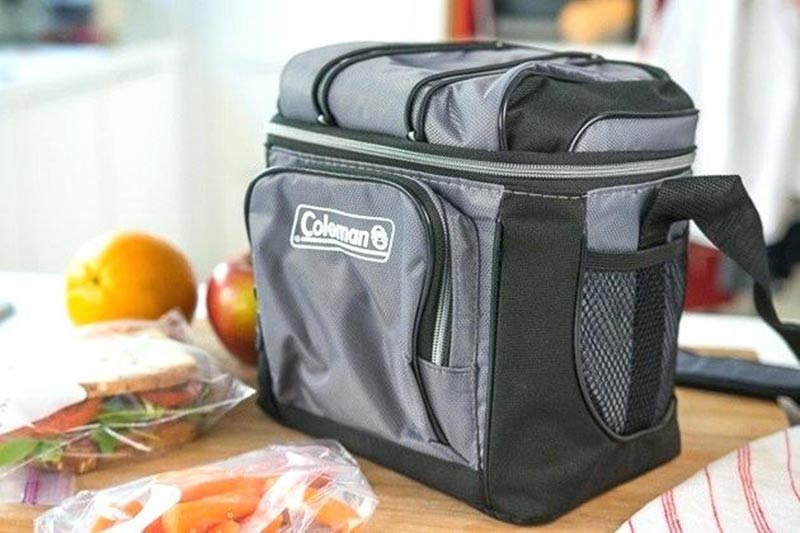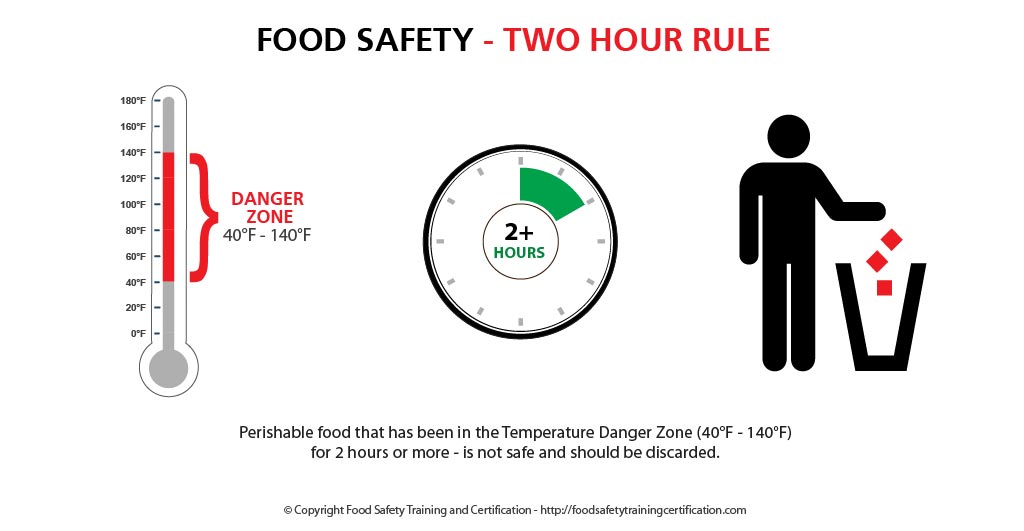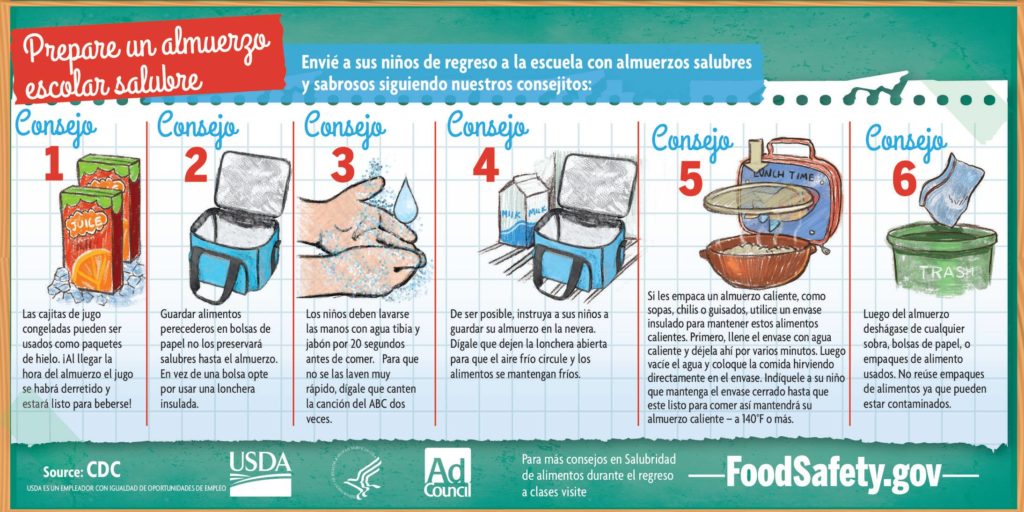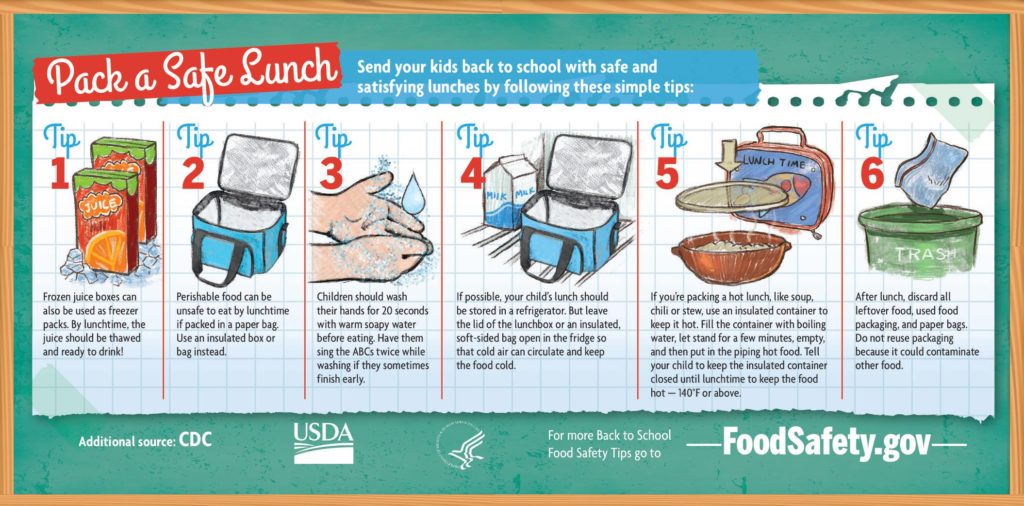Whether it’s to school or work, millions of people carry in their lunches. If food brought from home and is not prepared, packed, and stored properly – bacteria growth can occur and cause food illness.
Likewise, during warmer months bacteria multiply faster – so preparing food for outdoor travel is more challenging.

Bacteria can grow rapidly at temperatures between 40°F – 140°F. In just 2 hours, these microorganisms can multiply to dangerous levels and can cause foodborne illness.

Bag Packing Food Safety Tips
- Perishable Food. If the lunch/snack contains perishable food items like luncheon meats, eggs, cheese, or yogurt, make sure to pack it with at least two cold sources. Harmful bacteria multiply rapidly so perishable food transported without an ice source won’t stay safe long.
- Learn about foodborne pathogens, cross contamination, cold and hot food safety, and best practices to prevent foodborne illness.
- Food Manager ANSI Certification: $99.00 - Valid in all States
- Food Handler Training: Only $7.00!
- 10% OFF: Enter Promo Code "train10off" at Checkout
- Freeze Liquids Beforehand. Frozen juice boxes or water can also be used as freezer packs. Freeze these items overnight and use with at least one other freezer pack. By lunchtime, the liquids should be thawed and ready to drink.
- Insulated Bag. Pack lunches containing perishable food in an insulated lunchbox or soft-sided lunch bag. Perishable food can be unsafe to eat by lunchtime if packed in a paper bag.
- Hot Foods. If packing a hot lunch, like soup, chili or stew, use an insulated container to keep it hot. Fill the container with boiling water, let stand for a few minutes, empty, and then put in the piping hot food. Tell children to keep the insulated container closed until lunchtime to keep the food hot – 140 °F or above.
- Refrigerate if Packing Beforehand. If packing a child’s lunch the night before, parents should leave it in the refrigerator overnight. The meal will stay cold longer because everything will be refrigerator temperature when it is placed in the lunchbox.
- Individual Baggies for Groups. If you’re responsible for packing snack for the team, troop, or group, keep perishable foods in a cooler with ice or cold packs until snack time. Pack snacks in individual baggies or containers, rather than having children share food from one serving dish.
Lunch Storage Tips
- Keep food cold. If possible, a child’s lunch should be stored in a refrigerator or cooler with ice upon arrival. Leave the lid of the lunchbox or bag open in the fridge so that cold air can better circulate and keep the food cold.
Cleaning and Disposal Tips
- Keep hands clean. Pack disposable wipes for washing hands before and after eating.
- Discard leftovers and disposable items. After lunch, discard all leftover food, used food packaging, and paper bags. Do not reuse packaging because it could contaminate other food and cause foodborne illness.

¡De regreso a clases! Envíe a sus niños (as) de regreso a la escuela con almuerzos salubres y sabrosos siguiendo nuestros consejitos.

Back to school! To send their children back to school with lunches, wholesome and tasty following our tips.

General Information
Keeping “Bag” Lunches Safe (USDA)
Safe handling recommendations to prevent foodborne illness from “bag” lunches.
